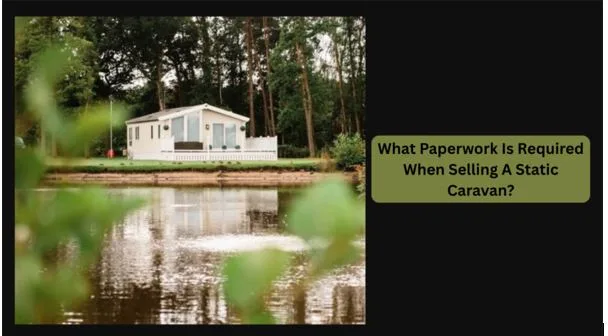What Paperwork Is Required When Selling A Static Caravan?
It is a daunting task to sell a static caravan, and it can be easy to forget that there is a lot of paperwork behind a simple decision to sell or not.
You might be experiencing conflicting feelings, bargaining with prospective customers, maintaining the caravan in good condition, and simultaneously trying to understand legal procedures you have never handled.
Everything distracts you from another activity, and before you know it, you are carrying the burden of the whole process on your shoulders. Furthermore, each park has slightly different regulations, which contribute to the extra uncertainty.
But when you know the documents that are needed and their importance, it is easier to sell a static caravan. This article will guide you through the significant paperwork you will need to complete to proceed with the sale with a clear and confident mind.
- Buyer Information Pack
Once you have decided in your mind that “I want to sell my static caravan,” you will need to prepare a clear information pack to present to the buyer.
This pack will help them know what they are buying and minimize the risk of future disputes. It usually contains information on the age, condition, pitch charge, operating expenses, and warranties of the caravan.
People want to know what they are getting, and parks will likely demand this information before proceeding. Doing this early helps accelerate the sales process and builds the buyers’ confidence in what you are offering.
Moreover, most parks value receiving this information, as it enables them to verify that all the details are consistent with their records. This is a small act that gives trust to the buyer and the park.
- Pitch Licence Overview
You should then collect your written agreement or pitch licence. This letter sets out the conditions under which your caravan may occupy its present pitch.
It demonstrates crucial aspects such as pitch charges, park regulations, occupancy rights, and even resale terms. Since the agreement is sold over to the new owner, they will be required to re-examine it before purchasing.
This will help them understand their long-term obligations and prevent conflicts after the sale. Check the park office for the current copy of the agreement if your agreement is older.
Parks stores these documents on record, and it becomes easier when they are in a clean version.
3. Required Sale Forms
When selling a static caravan, there are certain forms that you have to fill in, particularly when your caravan is subject to the rules of the Mobile Homes Act.
These may contain information about a buyer, a notice of proposed sale, and an assignment form. The names might change as you age, but the intention remains the same: to inform the park and legally document the transfer.
The papers will confirm the buyer’s identity, the price at which it will be sold, any commission payable, and the date by which the sale must be finalized.
This step may seem official, but it provides protection for both parties and ensures the park is aware of the change. To keep parks updated, submitting these documents within the stipulated time period makes your sale valid.
4. Utility Record Details
After you have nearly finalized the sale, you will be required to provide up-to-date utility information. This typically includes electricity, gas, and occasionally water readings.
It also has any top-ups or prepaid card balances you have made. This information also helps the buyer begin afresh without transferring your expenses.
They also enable the park to issue accurate final statements for both parties. Though such a thing may seem minor, in many cases it helps avoid conflicts over charges.
5. Ownership Proof Essentials
Your buyer and the park will desire evidence that you are a lawful owner of the caravan. This can involve your initial purchase invoice, financial settlement records (where necessary), or records verifying any improvements you have made over the years.
Moreover, parks usually require photo IDs for both the seller and the buyer. This eases the process, as well as ensures that the sale is authentic. Since one of the initial steps before listing your caravan is confirming ownership, getting these documents beforehand saves time and demonstrates to buyers that you are well-organized.
6. Park Approval Documents
The park usually checks the buyer before they buy the property to ensure they have met the minimum criteria, including being qualified to own a holiday home and accepting the park rules.
In some parks, the approval letter will be issued, but in others, an approval will be done by merely signing a transfer form. After that, you will fill out a handover checklist. This can be passing of keys, manuals, safety certificates, parking passes, or even gate fobs.
The checklist assures the buyer that they have been provided with all they need to settle in. This is used as the last step to help bring the sale together harmoniously and provide both parties with a clear understanding of what was exchanged.
Conclusion
It becomes very easy to sell a static caravan when you are sure of the paperwork. Every document serves a purpose, whether that of protecting you, assisting in the buyer, or ensuring the park does not break the law.
By planning these things well in advance, the sale will be quicker, negotiations will be less tense, and the whole process will seem more manageable. Once you have the preparation and knowledge of what is required, you will be able to sell your caravan without feeling stressed or giving it away.






